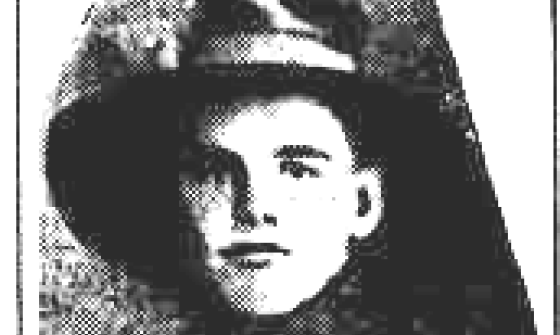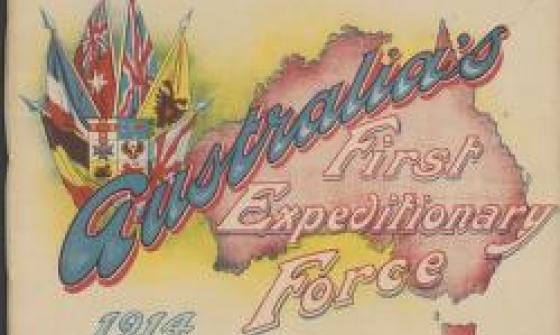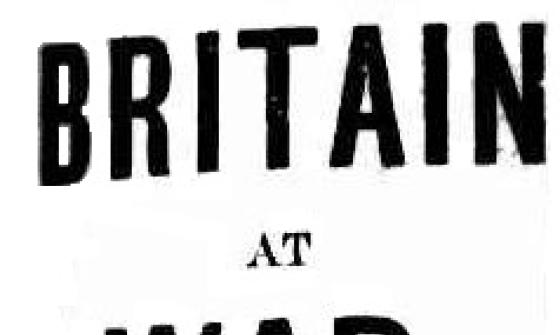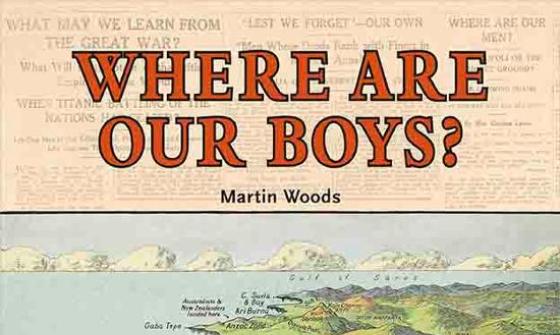First World War: Gallipoli
On April 25, 1915, the Australian troops, together with troops from New Zealand, Britain and France, landed at what came to be called ANZAC Cove. They aimed to assist a British naval operation to force the Dardanelles Strait and capture the Turkish capital, Constantinople.
Attempts to break the Turkish lines failed. The campaign lasted until December when the troops were successfully evacuated.
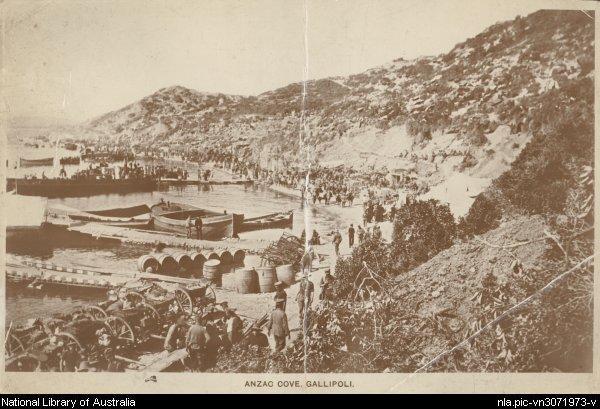
(1915). Anzac Cove, Gallipoli, nla.gov.au/nla.obj-136848282
(1915). Anzac Cove, Gallipoli, nla.gov.au/nla.obj-136848282
Selected published works
The National Library holds an extensive collection of the books published about the Gallipoli campaign since 1915.
- Official History of Australia in the War of 1914-1918
- The first 2 volumes are devoted to the Gallipoli campaign:
- Vol. 1 The story of ANZAC from the outbreak of war to the end of the first phase of the Gallipoli campaign, May 4, 1915
- Vol. 2 The story of ANZAC from 4 May, 1915, to the evacuation of the Gallipoli Peninsula
- The first 2 volumes are devoted to the Gallipoli campaign:
- Gallipoli one long grave by Kit Denton is a well illustrated work with many photographs.
- Gallipoli by Les Carlyon is a recent popular history of the campaign.
- Gallipoli an Australian encyclopedia of the 1915 Dardanelles Campaign by Ronald J Austin is on open access in the Main Reading Room Reference collection at RF 940.426 A937.
Published personal narratives are also held. In the catalogue search by the following subject heading:
The following keywords can also be used:
- 'gallipoli personal narratives'
- 'gallipoli diary'
Map, manuscript and pictorial material
In addition to the published material on Gallipoli, the Library also holds unpublished material in map, manuscript, and pictorial form.
In the catalogue type the keyword 'gallipoli' and using the options to the right of the search results, limit the search to the required format, for example 'map'.
Keywords can also be used, for example:
- 'gallipoli manuscript'
- 'anzac cove photograph'
Battlefield guides
The following guides provide useful information about the Gallipoli battlefield:
- Gallipoli: the battlefield guide by Mat McLachlan
- Gallipoli: a battlefield guide by Phil Taylor and Pam Cupper
Featured resources
Topographic map
Topographic map of Gallipoli Peninsula, Turkey, showing ANZAC and Turkish posts, trenches, tracks and roads, and approximate landing places. According to notes "Any profits derived from the sale of this Map will be handed to one or more of the War Funds".
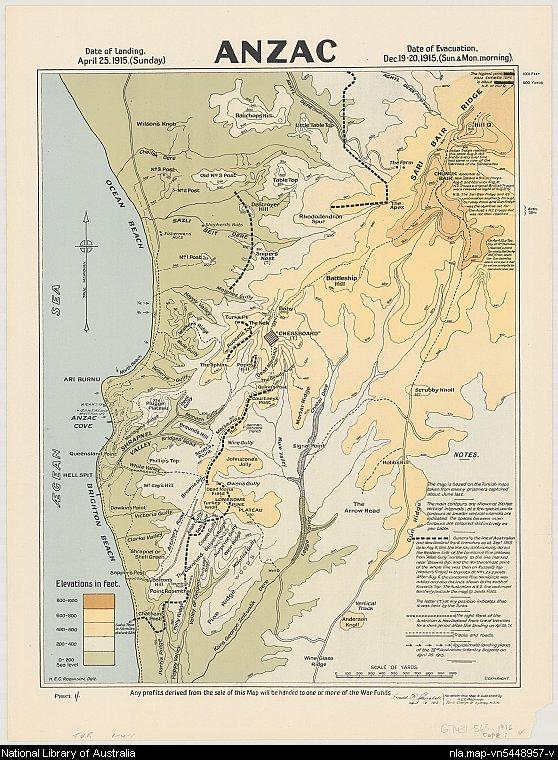
H.E.C. Robinson Pty Ltd & Gerald R. Campbell, Anzac date of landing, April 25 1915 (Sunday) : date of evacuation, Dec. 19-20, 1915 (Sun. & Mon. morning), nla.gov.au/nla.obj-2972791395
H.E.C. Robinson Pty Ltd & Gerald R. Campbell, Anzac date of landing, April 25 1915 (Sunday) : date of evacuation, Dec. 19-20, 1915 (Sun. & Mon. morning), nla.gov.au/nla.obj-2972791395
The ANZAC book
The ANZAC book was a trench publication, published in 1916. It contained illustrations, stories, cartoons, and poems written by the soldiers themselves, often whilst under fire at Gallipoli.
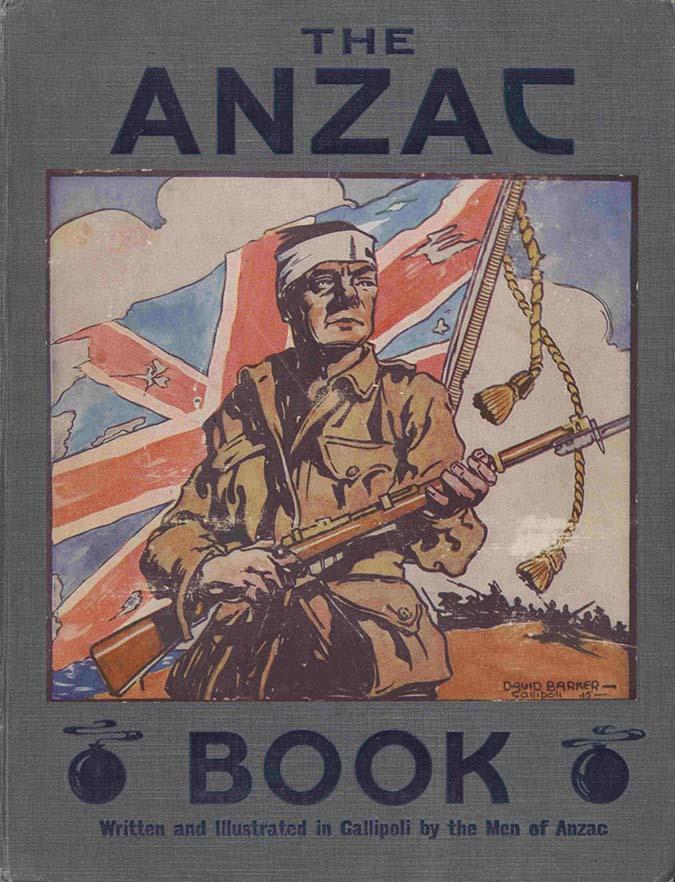
Australia. Army. Australian Imperial Force (1914-1921). The Anzac book / written and illustrated in Gallipolli by the men of Anzac, 1916, nla.gov.au/nla.obj-18456506
Australia. Army. Australian Imperial Force (1914-1921). The Anzac book / written and illustrated in Gallipolli by the men of Anzac, 1916, nla.gov.au/nla.obj-18456506
The Gallipoli letter
The Gallipoli letter is an 8000 word private report which was written by Keith Arthur Murdoch with the help of a British war correspondent (Ellis Ashmead-Bartlett) after he visited the Gallipoli peninsula in September 1915. It describes the organisation, and conditions of the Gallipoli campaign.
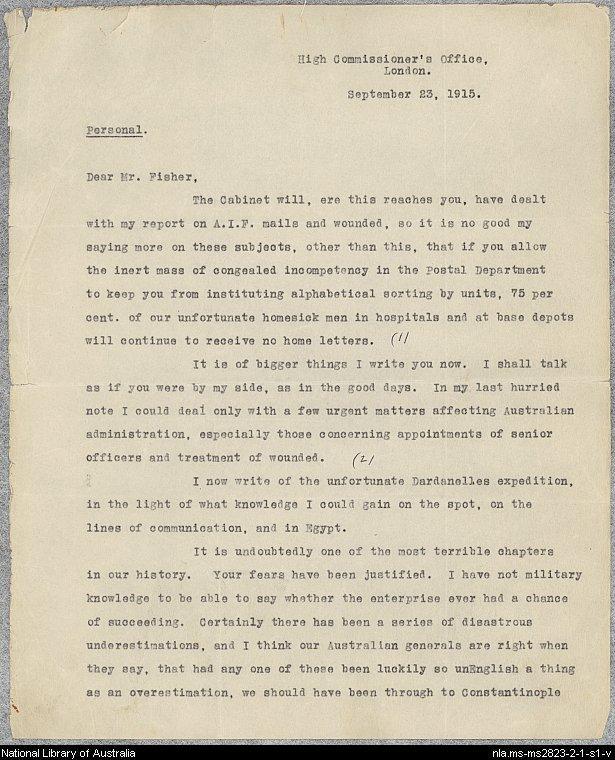
Keith Arthur Murdoch & Ellis Ashmead-Bartlett, (1915), Gallipoli letter from Keith Arthur Murdoch to Andrew Fisher, nla.gov.au/nla.obj-231555472
Keith Arthur Murdoch & Ellis Ashmead-Bartlett, (1915), Gallipoli letter from Keith Arthur Murdoch to Andrew Fisher, nla.gov.au/nla.obj-231555472
News article
A first hand report of the landings at Gallipoli by British war correspondent Ellis Ashmead-Bartlett.
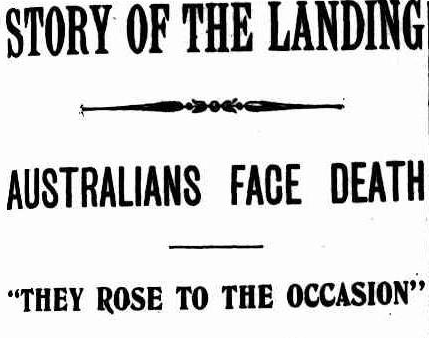
Australians at Dardanelles: Thrilling Deeds of Heroism. (1915, May 8). The Argus (Melbourne, Vic. : 1848 - 1957), p. 19., nla.gov.au/nla.news-article1515516
Australians at Dardanelles: Thrilling Deeds of Heroism. (1915, May 8). The Argus (Melbourne, Vic. : 1848 - 1957), p. 19., nla.gov.au/nla.news-article1515516
Related websites
An educational website with wide ranging content related to Gallipoli from the Department of Veterans' Affairs.
An online exhibition from the Australian War Memorial which 'tells the story of the Australians who landed at Gallipoli, and of the creation of the ANZAC legend'.
Online exhibitions
Despatches from Gallipoli is an exhibition held at the National Library in 2006 which dealt with the experiences of four Australian journalists, Charles Bean, Keith Murdoch, Phillip Schuler and Charles Smith, who went to Gallipoli in 1915.
Origins of the ANZAC acronym
It is difficult to say who first coined the acronym ANZAC. The Australian War Memorial provides useful information on the history and use of the term in its Encyclopedia.
Case study
"I am looking for information on the man with the donkey who was at Gallipoli"
The ‘man with the donkey’ was John Simpson Kirkpatrick, a stretcher bearer, who with his donkey ‘Duffy’ worked to carry the wounded to safety at Gallipoli until he himself was shot and killed.
A search of the online catalogue using the terms ‘John Simpson Kirkpatrick’ retrieves several results, including biographical cuttings files and photographs. Books include Dust donkeys and delusions : the myth of Simpson and his donkey exposed.
All are available to request and view at the Library.
Online resources include the following:
- Trove, which amongst other articles has one from 1915 called "THE MAN WITH THE DONKEY "Western Mail (Perth, WA : 1885-1954), 25 December, p.51
- Australian War Memorial which has an article in its Encyclopedia entitled 'John Simpson Kirkpatrick: Simpson and his donkey', and a number of related items in its collection
- Australian Dictionary of Biography entry on Simpson.

Bruce Howard & Herald and Weekly Times, (1990), The grave of Simpson (of Simpson and his donkey fame) in a beach graveyard on Gallipoli, nla.gov.au/nla.obj-148148160
Bruce Howard & Herald and Weekly Times, (1990), The grave of Simpson (of Simpson and his donkey fame) in a beach graveyard on Gallipoli, nla.gov.au/nla.obj-148148160
